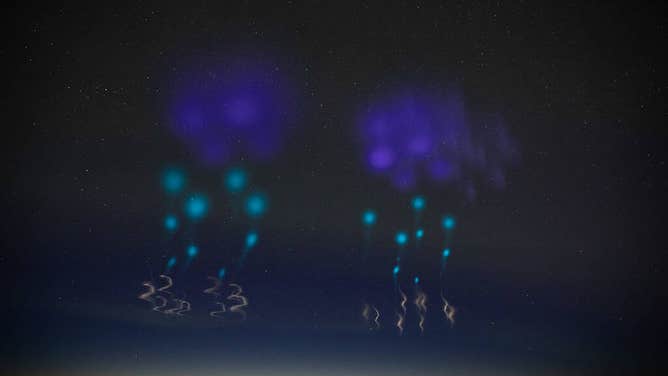Physicist hopes to uncover why satellites behave strangely when flying above the North Pole
NASA experiment results could help satellites operate longer, use less fuel
NASA rocket to study mysterious area above the North Pole
Mark Conde, professor of physics and the lead for the mission in the study, discusses how a NASA rocket will study the mysterious area above the North Pole.
Something strange happens when a satellite orbiting Earth flies through the atmosphere near the North Pole at a certain time of day -- the spacecraft slows down because the air is denser in one spot -- but no one knows why. The team behind a recently launched NASA rocket is determined to get to the bottom of the mystery surrounding the area known as the polar cusp.
According to NASA, the density of Earth's atmosphere decreases the higher you go, staying consistent across the globe, however at 250 miles up in the polar cusp, there is a pocket of air one and a half times denser than the other areas at the same altitude. When spacecraft encounter this increase in aerodynamic drag, it can disturb their orbit.
"The problem is spacecraft operators have to worry about collisions with space debris and other spacecraft, and for that, they have to be able to predict the orbit of the spacecraft and if it’s passing through this region of extra drag that changes the orbit a little bit and messes up the prediction," Mark Conde, a physicist at the University of Alaska Fairbanks and the principal investigator for the NASA CREX-2 sounding rocket mission.
MORE SPACE NEWS: James Webb Space Telescope ready for Christmas liftoff
On Dec. 1, a sounding rocket launched from the Andøya Space Center in Norway carrying NASA’s Cusp Region Experiment-2, or CREX-2. The rocket reached a peak of 392 miles above Earth collecting data that will help learn more about the dynamics of the polar cusp.
"We don’t really understand what allows that to happen, what supports this, it’s an increase in density of the atmosphere at high altitude … the purpose of this mission was to fly through that region," Conde said.
The rocket ejected 20 soda can-sized canisters in four directions, each timed to burst at different altitudes, releasing vapor tracers. According to NASA, the vapor creates a trail allowing researchers to see the air movement in the polar cusp.

Colorful clouds formed by the release of vapor tracers from two rockets allow scientists to measure winds. (Credits: NASA/Lee Wingfield)
It was a complicated launch window because the polar cusp is only present around noon local time, and the sky needed to be dark. The mission was first slated to launch in 2019, but the conditions were never right, and then the coronavirus pandemic further delayed the experiment.
SPACE HOLIDAY: How astronauts celebrate Christmas 200 miles above Earth
CREX-2 measured the winds and the ionosphere in the polar cusp to try and determine how the solar wind and the magnetic field of Earth allow this region of extra drag to exist, explained Conde.
The initial results are promising, Conde said and could help spacecraft operators.
"If we can understand what causes it and we can model it, that will be factored into the models of spacecraft orbit so ultimately saving spacecraft operators propellants on their spacecraft and allow their spacecraft to stay in orbit for longer because they are better able to account for this anomaly."
RELATED: Blue Origin’s $28 million auction winner reveals himself after 7 months
